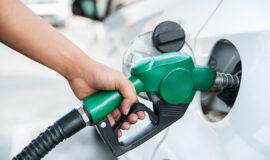
Finding the right vehicle while staying within the budget is what everybody demands. But when people have a limited budget, they usually opt for used cars. But how do you know the car is in the right condition and suitable for you? For this purpose, a detailed car inspection is required. It is a process of examining the vehicle and identifying its faults, if it has any. However, if you are doing it yourself instead of opting for a certified or local car inspection, explore the tips for inspecting a used car.
Used Car Inspection Checklist
As car inspection plays an important role in safeguarding your big purchase, here are some of the things that you need to consider:
Begin With the Exterior
The first thing you need to do is to inspect the exterior of the car. Take a quick walk around the car to have a first look. However, while doing so, you need to have a detailed look at the following things:
Paint: Inspect the condition of the paint by rubbing your finger on it.
Dents or Scratches: See if the car has any dents or scratches that compromise its appearance.
Look for Damaged and Replaced Parts: Examine if the car has any holes, cracks, or gaps in its parts. This is an indication of the repaired or replaced parts.
Trunk: Open the trunk to see if it opens and closes easily without any trouble. If the trunk has dents or rust, there is a higher chance that it may not close properly.
If it’s too difficult, you may book OLX Car Inspection Service to get a detailed report of the car.
Check Tyres
While examining the exterior of the car, have a look maintenance of the tyres. You need to make sure that they are in good condition and have no wear and tear. However, not just this, you also need to examine the alignment of the tyres. This is an important step to consider since the misaligned tyres will impact the vehicle’s performance.
Condition Inside the Hood

The next very important step is to have a look under the hood and see what’s happening inside. Have a look at the following things:
Open and Close the Hood: Try to open and close the hood to ensure there is no interruption. If it does not close completely, it means the bonnet has a dent and is not well-maintained.
Belts and Hoses: Now, have a look at the belts and hoses and look for any damaged parts. Be very careful while doing this, or else you will have to spend a lot to get them repaired.
Engine Checking: The engine must not have black stains; if it does, it is an indication of corrosion. But not only this, you also need to make sure there is no fluid leakage happening in the engine.
Fluid: Also, examine the fluid and see if it has a burnt smell or dark colour. If it does, it is a bad sign for the engine.
Inspect the Interior
Now that you have examined the exterior of the car, it is time to examine the interior. Have a look at the following important factors to consider:
Seats: The seats must be in good condition, with no wear or tear and stains. Also, see if they are operated properly by adjusting them.
Air Conditioner: Turn the air conditioner on in the car and see how well it performs by maintaining the temperature.
Mileage: Have a look at the mileage of the car to see how much the car has travelled.
Other Functions: While inspecting the interior of the car, also have a look at the other functions. For instance, see if the indicators, headlights, etc, are operating well.
Take a Test Drive
Even when you examine the interior and exterior of the car, you can only decide once you have a test drive. While taking a drive, have a look at the following features:
Brakes: The brakes must be working properly with no squeaking sound from the brake pedal.
Steering: The steering should be working smoothly without any interruption while driving the car.
Conclusion
Once you have examined the car completely, it is time to make the decision. Ensure you have inspected the used car carefully before purchase. However, know that the decision must not be made solely based on the car’s condition, but you also need to consider the documentation of the car as well.








Leave a Reply